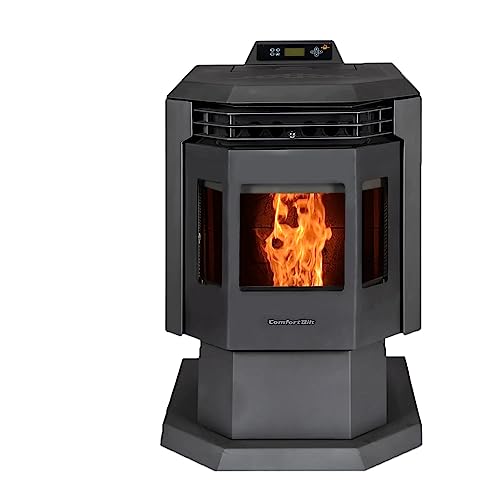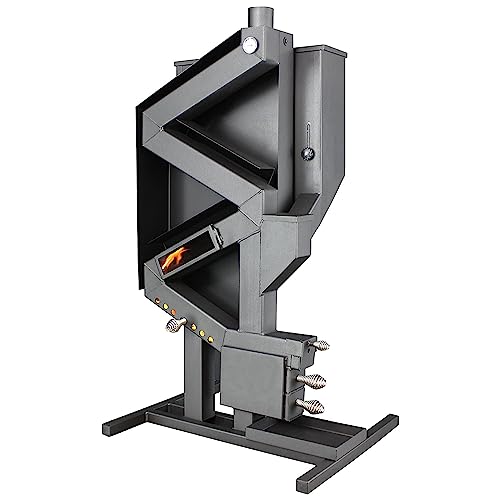You'll Never Guess This Pellet Stove Furnace's Secrets
페이지 정보

본문
 Pellet Stove Furnace
Pellet Stove Furnacepellet stove outdoor stoves are offered as freestanding units or fireplace inserts that can give your home the look of a traditional fireplace that burns wood. They can be purchased in freestanding units as well as fireplace inserts that give your home the look of traditional wood-burning fireplaces.
 The auger moves pellets from the hopper to the combustion chamber, where they are burnt and generate heat. Sensors are able to monitor the flame and alter the speed of operation to maintain the desired temperature in the room.
The auger moves pellets from the hopper to the combustion chamber, where they are burnt and generate heat. Sensors are able to monitor the flame and alter the speed of operation to maintain the desired temperature in the room.1. Energy Efficiency
Pellet stoves burn renewable, non-toxic fuel made of compressed sawdust, bark, wood chips and other materials that are typically placed in landfills but which can be used to create a clean and efficient source of heating. As a result, they help homeowners lower their energy usage and decrease greenhouse gas emissions. Many users of pellet stoves say that they recoup their initial investment in only a couple of years, through a reduction in their heating bills.
Pellets are much more dense and compressed than natural wood, which makes them more efficient in burning. They also produce much less creosote buildup than traditional fireplaces that burn wood. They are also packaged in plastic bags that seal out moisture, and require less frequent cleaning.
Pellet stoves, like other heating systems need to be properly sized and vented. A professional technician can evaluate your space and venting requirements to ensure the best results.
During installation, a hearth will be constructed in accordance with your specifications. Then, the vent is installed through an opening that is cut into the exterior of your home. The vent can be placed on a side wall or through the roof, depending on your preference and local regulations.
Once the vent and hearth are complete and the stove is ready to be plugged in and turned on. Some manufacturers provide the option of a remote control to make it simple to begin and keep the fire going, while others provide additional sensors to monitor airflow and combustion, flue temperatures, and pressure. When the system detects it requires more pellets or less, it sends a signal to the auger that it needs to accelerate or slow it down in line with the needs.
All stoves have a storage container that can accommodate between 35 and 130 pounds of pellets. The size of the hopper will determine how often you'll need to refill your stove. Larger hoppers can be used for longer periods before a refill is required. A grille pulls air from the room, passes it through the heat exchanger and then blows heated air through the living area through convection. A grate or auger spreads the pellets, and the pan beneath is used to collect any burned ones as well as the ashes of combustion.
Although pellet stoves are more efficient than wood-burning models, they're not as efficient as natural gas furnaces or electric heaters. The electric components that drive their motorized components require electricity and could pose an issue during a power failure, but backup systems are in place for batteries and generators.
2. Low Maintenance
Pellet stoves are extremely efficient, but just like any other major heating appliance, they require some maintenance to ensure that they function properly. Cleaning regularly your stove's exhaust vents and stove will prevent the accumulation of harmful creosote, which can cause a fire, explosion or damage to your stove or home.
A pellet stove is a device that burns compressed natural wood particles or other materials (like corn kernels, nutshells or small pieces of scrap wood). The pellets are fed into the combustion chamber by an electric auger. The thermostat you set controls the speed at which pellets are delivered to the burner. This allows the fire to remain roaring, or to lower the rate and even go out according to the temperature you set. When the fire goes out the ash is thrown into an empty ash tin beneath the burner, which can be easily removed and then disposed of.
Pellets are made from byproducts that could have been discarded in the process of processing lumber. They are a renewable source and produce less dust than traditional wood-burning appliances, making pellet stoves a cleaner heat source. The amount of carbon monoxide, carcinogens, and other harmful chemicals released by pellet stoves is also significantly lower than that of modern wood stoves that have been certified by the EPA.
Due to the low emission they produce, these stoves are not required to be vented through a chimney like traditional wood stoves, but they must be properly vented through a wall or another external structure. pellet stoves used for sale stoves have flue ports that are located on the front or back of the appliance. They are connected to a ventpipe that extends out the house.
One disadvantage of pellet stove fireplace insert stoves is that you need to purchase or store enough pellets to last the winter months. On average, homeowners of a pellet stove furnace stove consume three tons of pellets during the course of the winter season at a cost of $200 per ton. These expenses will increase over time, but it is less expensive than buying and transporting firewood for traditional fireplaces or stove. Make sure that you purchase enough pellets to ensure that your stove will work throughout the coldest winter months and you have a suitable place to store the pellets (preferably dry, cool and away from the ground).
3. Reduced Carbon Footprint
Pellet stoves generate heat using renewable biomass fuels, reducing the need for finite fossil fuels. This reduces carbon footprints as well as diversifying energy sources for homes.
Even the most modern woodstoves that are EPA certified emit considerably less than pellet stoves. The emissions of pellet stoves are also less than those from gas furnaces. Pellets are made of compressed sawdust, bark and other lumber waste. They may also contain different substances like soybeans, corn, nutshells, cherry pits, and agricultural waste. When they are burned, they release less particulates, which could cause respiratory problems and allergies, carcinogens and nitrous dioxide.
The primary difference between wood stoves and pellet stove is the feed system. Pellet stoves have hoppers which hold the pellets. When the thermostat or sensors signal that the room is in need of heating, the furnace turns. The pellets are fed into the combustion chamber, where they burn to produce heat. The combustion chamber moves through a heat exchanger, which transmits the heat to the blower and out into the room. This process results in low emissions and no creosote buildup.
After the hopper has been emptied, the ash is removed using a cyclone and is deposited in an ash bin. The stove is fitted with a fan that circulates the heated, clean air into the room. The majority of pellet stoves are designed to operate with minimal maintenance and have a large viewing window that allows you and your family members to enjoy the flames.
The quality of pellets is the primary element that influences pellet stove emissions. The poor quality pellets emit more emissions. When choosing your pellets, ensure they are certified as meeting certain standards and don't contain other ingredients such as petroleum-based or urea-based substances. Also look for a company that offers a guarantee and will repair or replace components in the event of a malfunction. If you're looking for an even greener approach, some states allow homeowners to claim a tax credit for installing pellet stoves. This is a great way to help offset the initial cost of this type of stove and make installation more affordable.
4. Reduced Noise
Pellet stoves generate very little smoke and emissions in comparison to wood burning fireplaces. They also utilize an electric fan to distribute heat more evenly across the room. This is among the reasons that pellet stoves require less maintenance than traditional wood stoves. While wood stoves require regular cleaning of chemical residues and particles to prevent their deterioration stoves can be cleaned by the use of a vacuum cleaner made of metal.
Many manufacturers have designed their stoves in a way that they are easy to install, operate and maintain. The stoves come in different styles to are designed to match the interior decor of your home. Some models include an app for WIFI, a remote control and thermostat that can be programmed.
The majority of pellet stoves come with an enormous fuel hopper that can hold between 35 and 130 pounds of pellets. The pellets are then fed into the combustion chamber by an auger. The speed at which the pellets are delivered to the burner determines how hot the fire is and the heat output. The hopper can be filled with hardwood pellets (from dense wood species such as oak and hickory) or softwood pellets (from pine and fir). Many stoves can use biomass pellets made of switchgrass and corn. This is an environmentally friendly alternative.
Pellet stoves produce less smoke and require less maintenance because they use cleaner fuel than wood-burning fireplaces. They also don't require a chimney, which makes them a better choice for new constructions or retrofits.
Pellet stoves do not require regular cleaning of creosote or other chemical like wood stoves. They only need periodic inspections to ensure the proper operation and maintenance. This could involve regular cleaning and inspection of the ash or "clinker" as well as the fans and motors, depending on the model. Your appliance dealer can explain the correct procedures for your specific brand and model. He can also provide you with information regarding storage and safety, and assist you in locating the correct fuel for your stove.
- 이전글Will Vauxhall Insignia Key Replacement Be The Next Supreme Ruler Of The World? 24.12.13
- 다음글See What Bmw Key Fob Replacement Cost Tricks The Celebs Are Utilizing 24.12.13
댓글목록
등록된 댓글이 없습니다.


